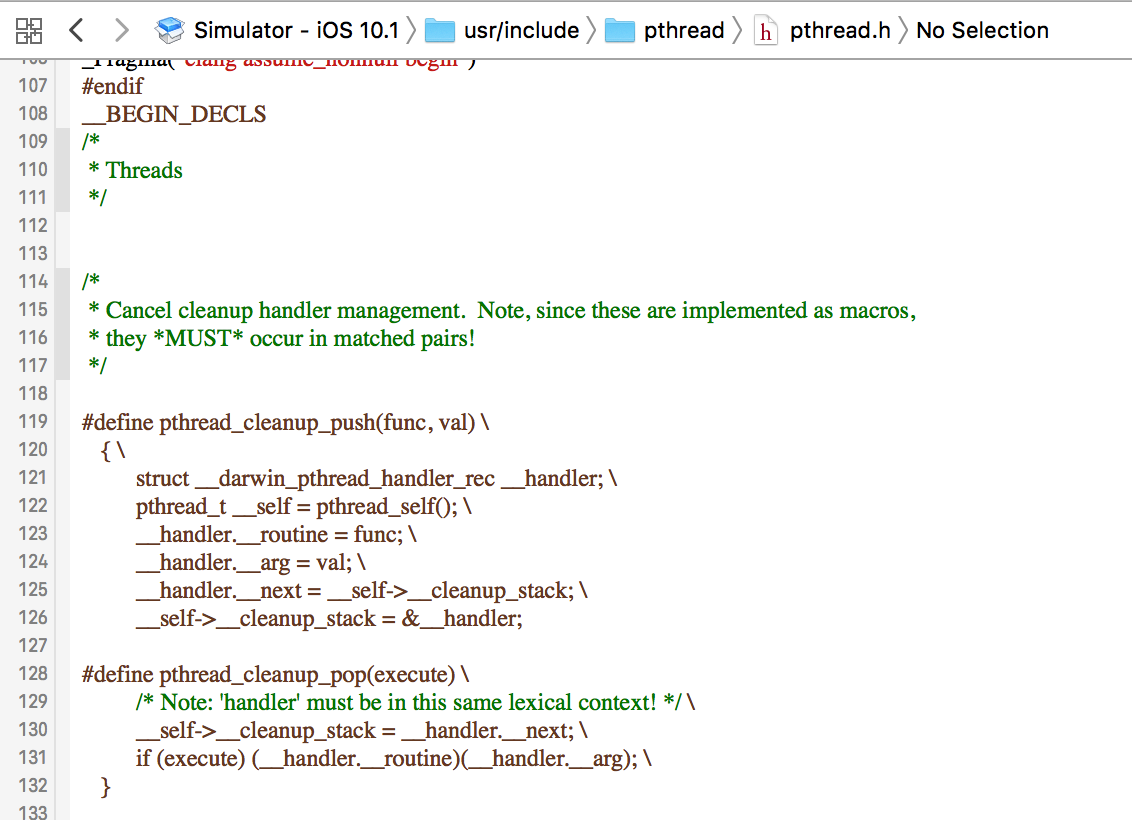iOS 開發 多執行緒詳解之Pthread實現多執行緒
阿新 • • 發佈:2019-02-04
pthread基礎
- 實現多執行緒的技術方案之一.
- pthread是POSIX thread的簡寫.表示跨平臺的執行緒介面.
- 多執行緒的開發框架,由於是跨平臺的C語言框架,在蘋果的標頭檔案中並沒有詳細的註釋.
pthread建立子執行緒步驟
1.匯入標頭檔案
#import <pthread.h>2.pthread建立子執行緒要使用的函式
/*
pthread_create(pthread_t _Nullable *restrict _Nonnull, const pthread_attr_t *restrict _Nullable, void * _Nullable (* _Nonnull)(void - (void)touchesBegan:(NSSet<UITouch *> *)touches withEvent:(UIEvent *)event
{
// 執行緒除錯
NSLog(@"touchesBegan %@",[NSThread currentThread]);
[self pthreadDemo];
}
- (void)pthreadDemo
{
// 執行緒除錯
NSLog(@"pthreadDemo %@" 
